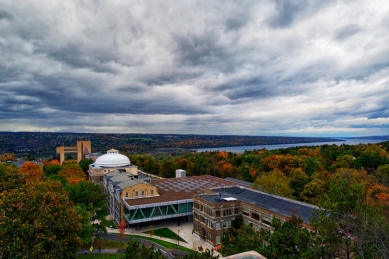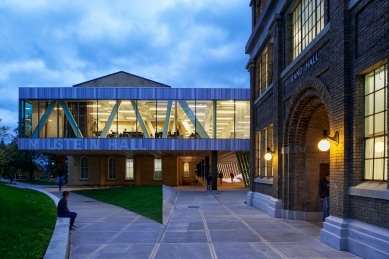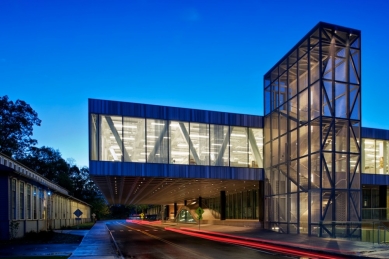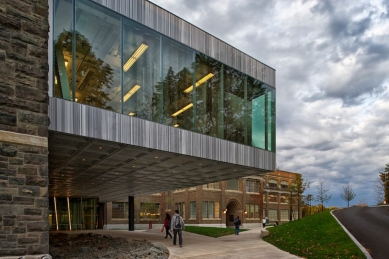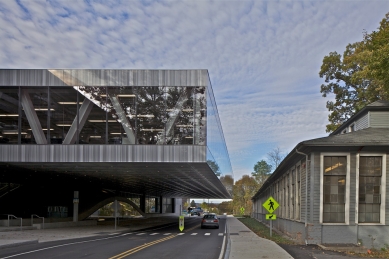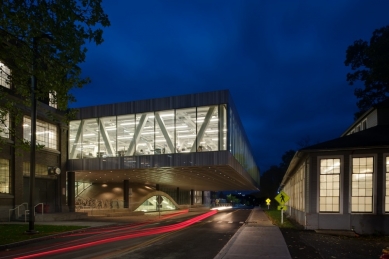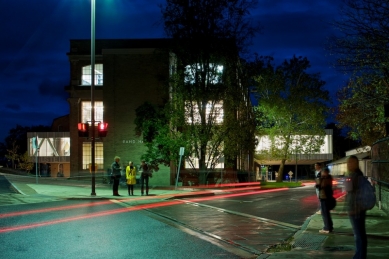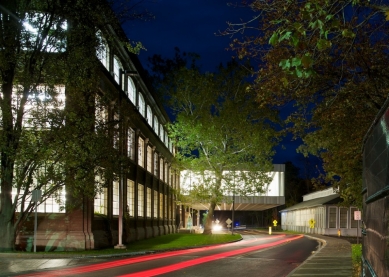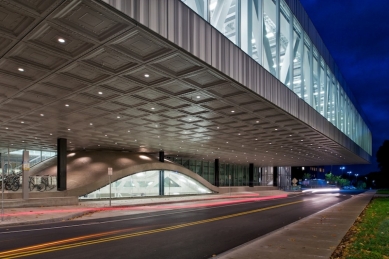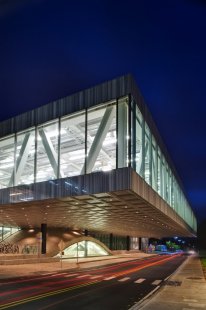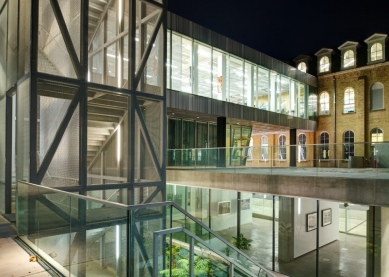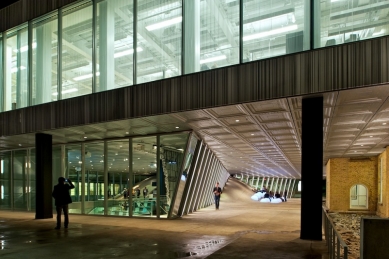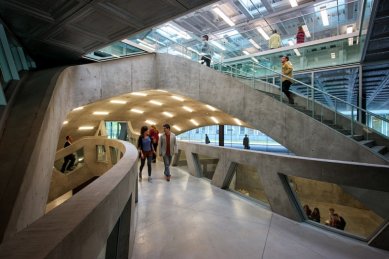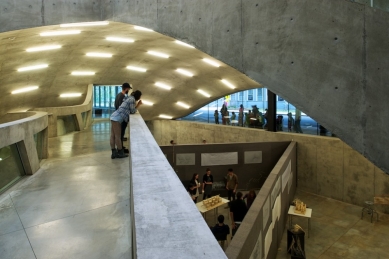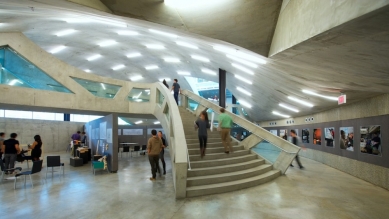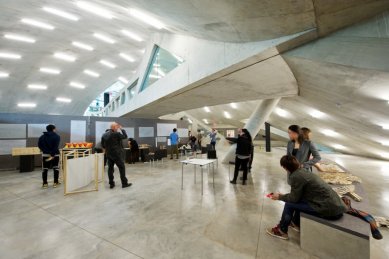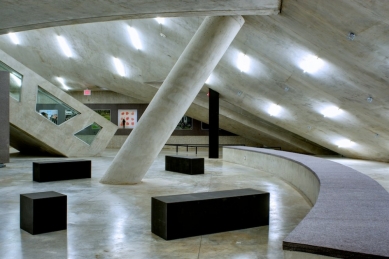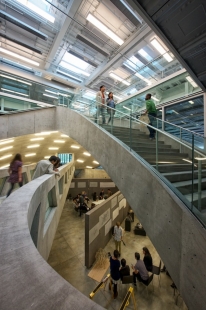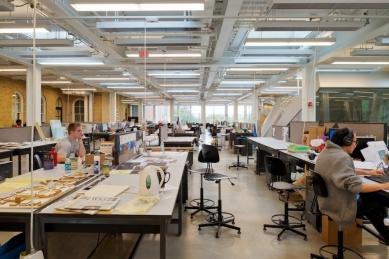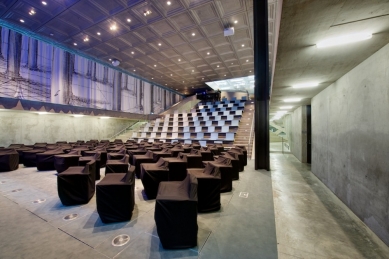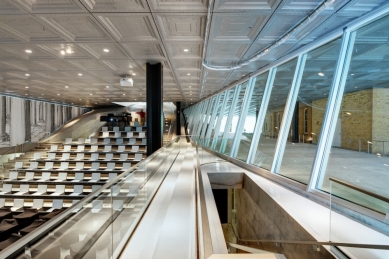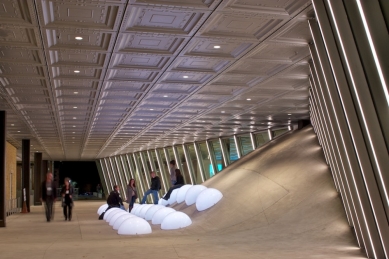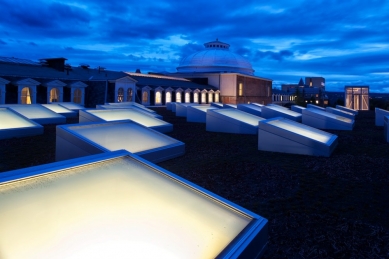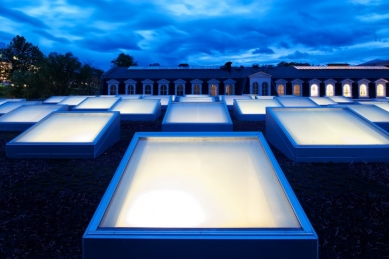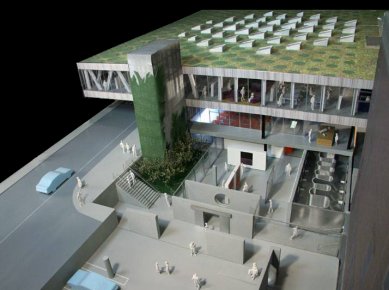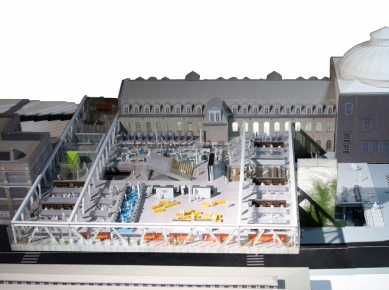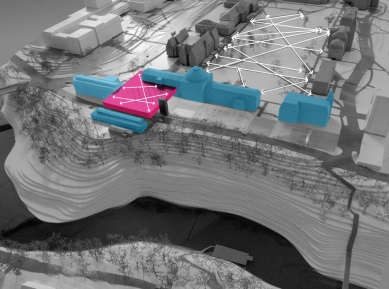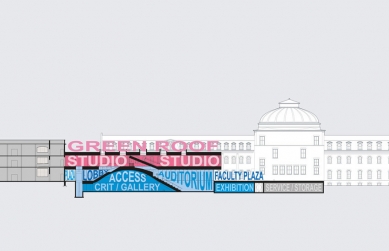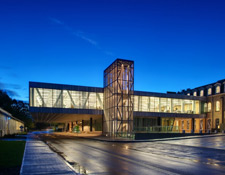 |
| © Philippe Ruault |
The new addition to the College of Architecture Art and Planning will connect the second levels of two existing buildings, Rand and Sibley Halls. Designed as a vast horizontal plate, the extension will accommodate studios, exhibition spaces and a fine arts library; the space’s expansive and relatively unprogramed character allowing for flexibility over time.
AAPThe new Milstein Hall will provide 43,000 additional square feet for Cornell’s College of Architecture, Art and Planning (AAP), adding much-needed space for studios, exhibition and jury spaces, a 300-seat auditorium and, in a second phase, a new home for the Fine Arts Library.
Currently housed in four separate buildings at the northern edge of the campus, the AAP forms the ‘back-side’ of the Arts Quad―detached from its atmosphere yet disengaged from the Falls Creek Gorge to the north. Despite the proliferation of architectural styles, the four buildings share a single typology―the linear, corridor building―segregating the AAP’s activities behind a labyrinth of security codes and dead ends. Milstein Hall offers an opportunity to simultaneously rethink the neglected north side of the Arts Quad and provide a space where the AAP’s interdisciplinary potential can finally be exploited.
Milstein HallMilstein connects the second levels of Sibley and Rand with a large horizontal plate. Typically, the box―modern architecture’s typology par excellence―stands in isolation. Here, it acts as a connector, linking Rand and Sibley and extending over University Avenue to establish an urban relationship to the Foundry. Released from its iconic solitude, it creates one system of buildings that are so coordinated and share so many resonances that they form a single complex.
Within the box, the building provides a typology entirely absent from the campus: a vast horizontal expanse that allows for multiple, simultaneous occupations―studios, crit spaces and library―and flexibility over time. Within the horizontal plate, subtle manipulations of the section―a sunken area for the library, raised areas for some crit spaces―define zones that suggest and trigger particular uses.
Lifted, the building leaves the figure-ground of the AAP campus intact. Rather than occupying the north side of campus, further obstructing the relationship to the gorge, the building and a new plaza north of the Sibley dome facilitate, for the first time, an open public center for the AAP.
Beneath the lifted box, a half-submerged “lower plate” contains a cluster of public programs―auditorium, exhibition and crit spaces―that serve the entire AAP. The box above is intersected by the bulging roof of the lower plate, a contamination that simultaneously provides access into the box, the required slope of the auditorium, and an open, double-height jury space and foyer within the lower plate.
Sheltered from light beneath the upper plate, the auditorium is defined by three glass walls, exposing public monuments of the AAP’s life to the entire college. Within the lower plate, the auditorium is surrounded by a continuous ring of exhibition space and linked to the basement level of Sibley. To the west, a new plaza extends from the central, domed portion of Sibley Hall, reinforcing its importance and creating, for the first time, a coherent entry sequence from the North into both the first floor and basement of Sibley.
UrbanismWithin the larger campus, Milstein acts as a hinge between North and South, simultaneously acting as a terminus for the east side of the Arts quad and marking the beginning of a theoretical zone of public space from Rand Hall to Central Avenue. Future additions to the City and Regional Planning Department (to provide group work and seminar facilities) and the Art Department (providing large scale space for media, conceptual and performing arts) could extend their activities into this zone. Together with the lower plate of Milstein these additions form a series of three-dimensional events that complete the northern edge of the campus.
OMA


